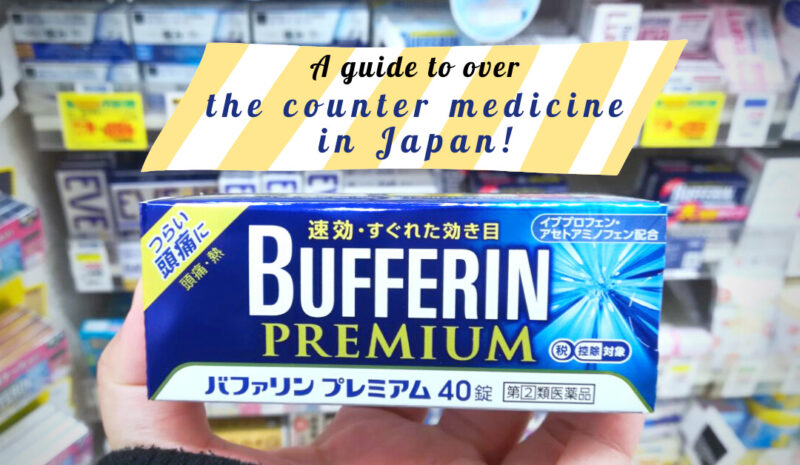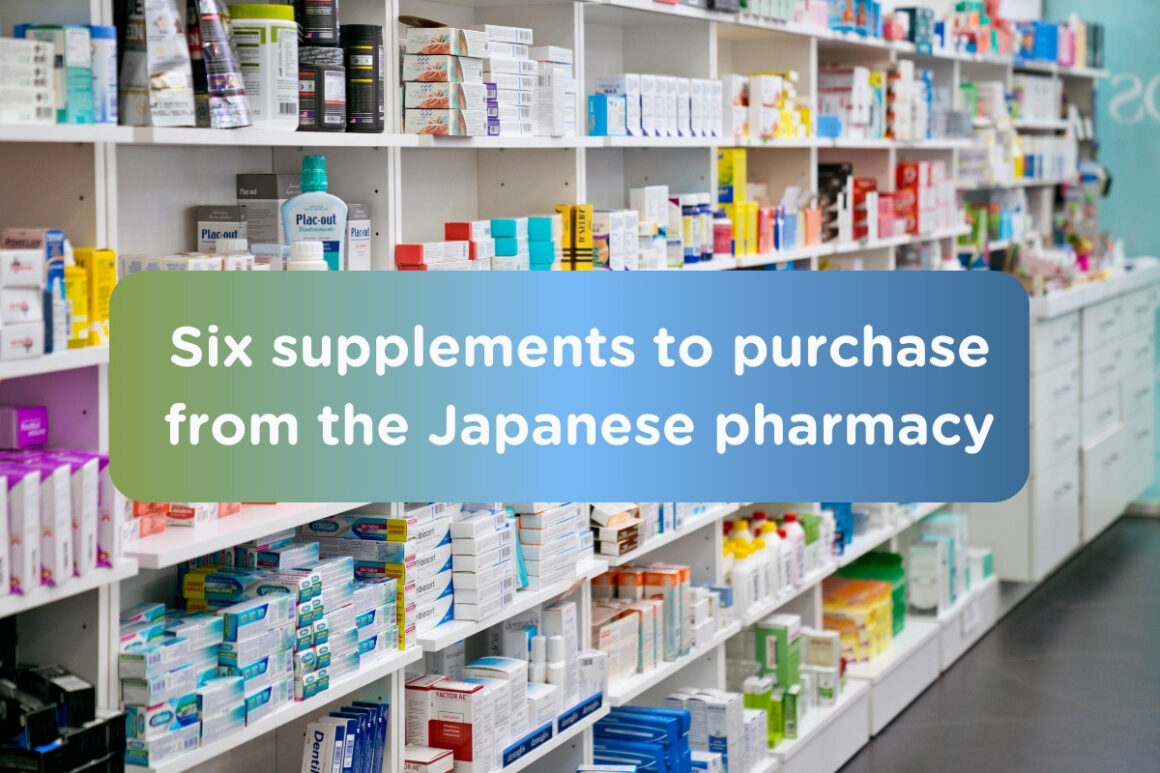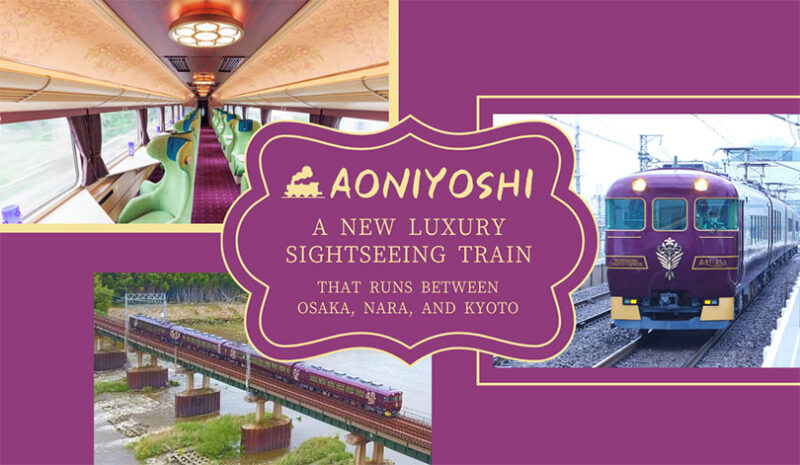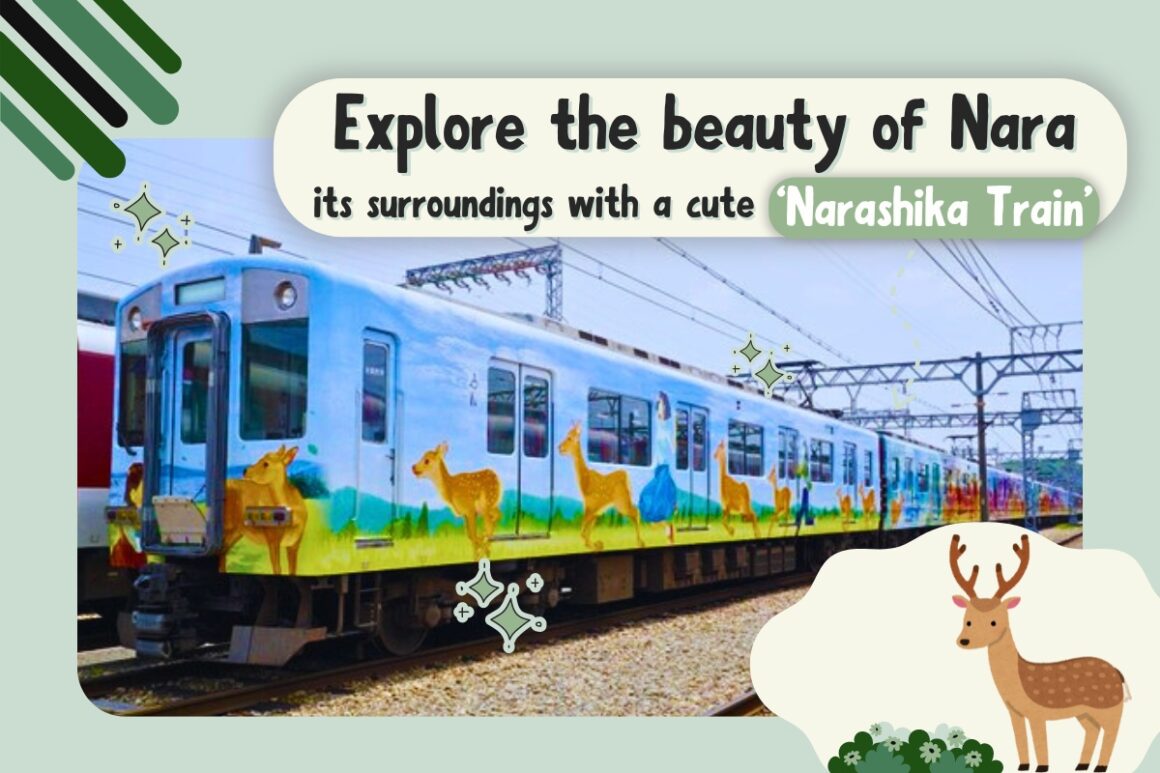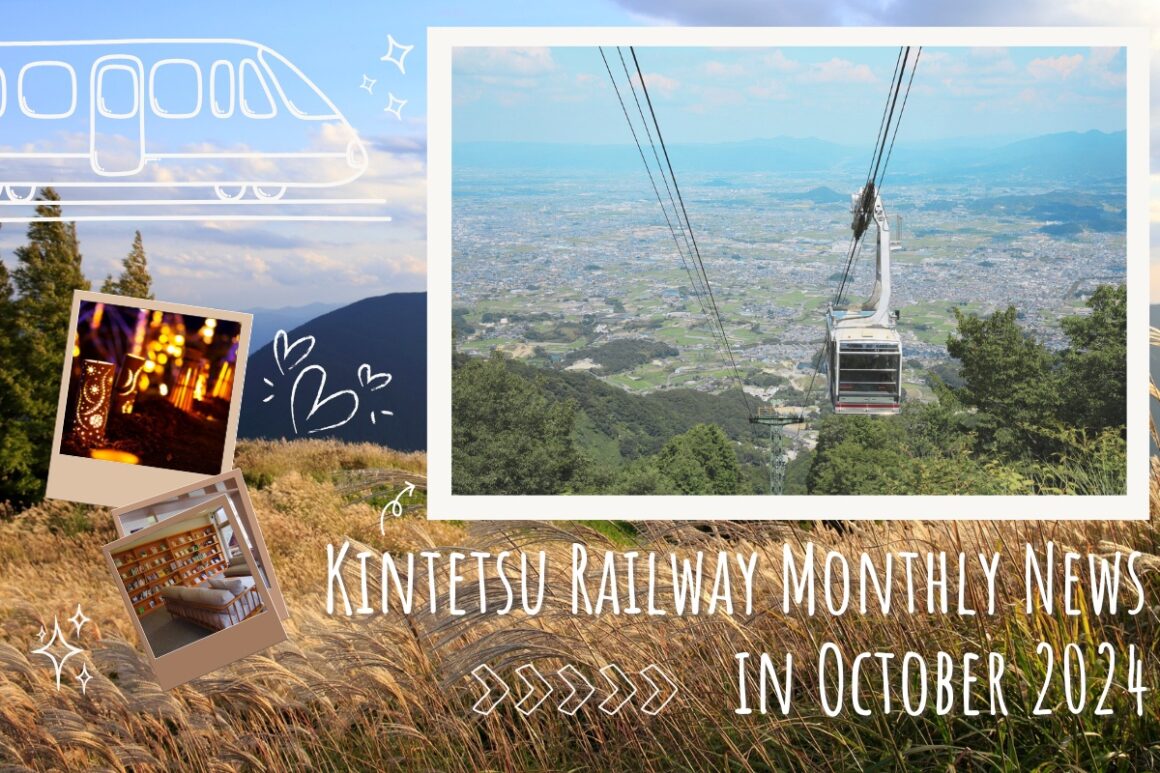10 amazing things to do in Fukui, Japan!
Mar 01, 2021
Fukui is nestled on Honsu Island in the Chubu region of Japan. Fukui is known as one of the smallest prefectures in Japan, but this prefecture is packed with many interesting spots that can’t be found in the metropolitan area.
Although Fukui is often overlooked for its more famous neighbors, the prefecture boasts sightseeing spots like Eiheiji Temple, Fukui Prefectural Dinosaur Museum, and also amazing local delicacies.
Brimming with beautiful nature and interesting tourist destinations, how about visiting Fukui to escape from the hustle and bustle of city life?
Index
How to get there
Recommended sightseeing spots in Fukui:
Fukui’s best local treats:
How to get there
Fukui is accessible by both trains and planes. The main transportation hub is the Fukui Station, which connects the prefecture to Tokyo, Osaka, Kyoto, and other cities through JR Lines.
It takes 3.5 hours to travel from Tokyo to Fukui; you need to take the Hikari train along the JR Tokkaido Shinkansen and transfer to JR Shirasagi limited express train for Fukui. The entire trip costs about 14,000 yen and is fully covered by the JR pass.
If you want to travel by air to Fukui, you need to fly from Tokyo’s Haneda Airport to Komatsu Airport near Ishikawa Prefecture. The flight takes about 1 hour, and Komatsu Airport is 1 hour away from Fukui Station by bus.
Recommended sightseeing spots in Fukui
Fukui is a destination to visit if you want to truly experience the beautiful landscape of rural Japan. The prefecture is packed with many off the beaten path spots to visit, giving you a different lens through to view Japan through.
This prefecture is a perfect destination for a weekend getaway. The natural spots and the temples in the prefecture offer you a tranquil atmosphere that is perfect for a relax.
Here are our picks for the best things to do in Fukui, Japan!
1. Discover your peace at Eiheji Temple
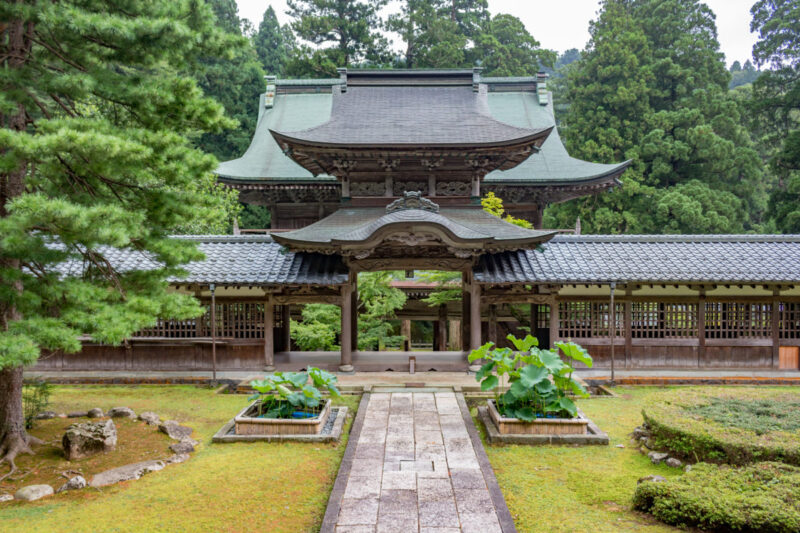
Eiheiji Temple sits on a mountain surrounded by cedar trees outside Fukui City. The temple was built in 1244 by Dogen, a scholar who introduce Soto Zen to Japan, making it one of the two main temples of Soto Zen Buddhism in Japan.
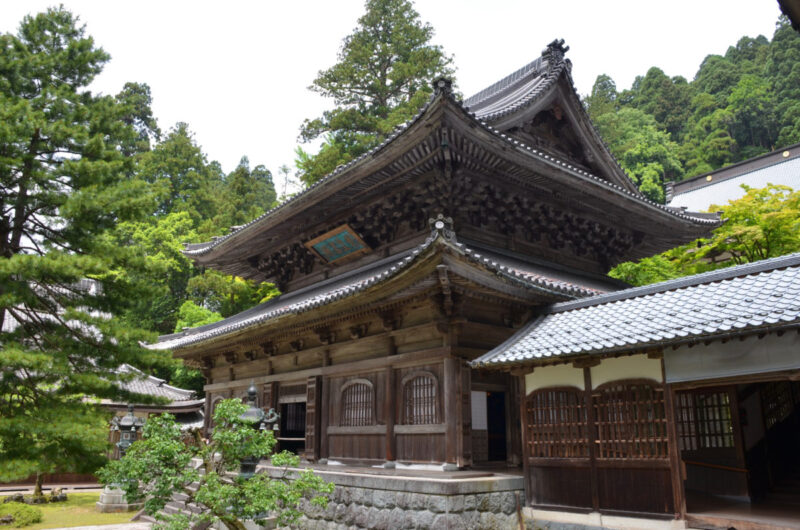
The temple is a large temple complex and is an active monastery, so there are about 250 practicing monks who live in the area, spending up to 2 years training and studying Zen Buddhism there.
Eiheiji Temple
-
- Business hours : 8:30 – 17:00
- Closed on January 1
- Admissions : 500 yen (adults), 200 yen (elementary & junior high school students), free for 7 years old and under
- Access: a 13-minute bus ride from Eiheijiguchi Station
- Google MAP
- Website
2. Enjoy the seasonal views of Asuwa River
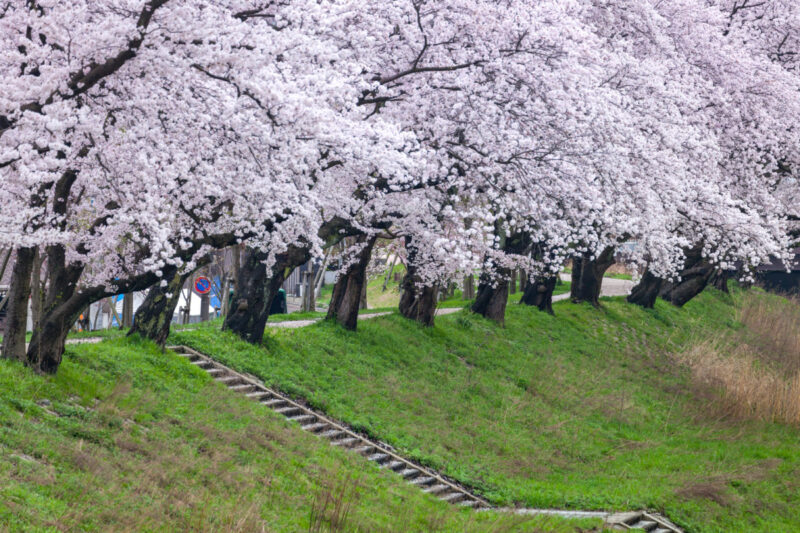
How about visiting Asuwa River to enjoy its seasonal views?
Asuwa River is a popular river in Fukui City, best known for its beautiful cherry blossoms.
There are about 600 cherry trees along the banks of the river, which look extremely gorgeous when in full bloom. The trees bloom during the first half of April and are lit up at night.
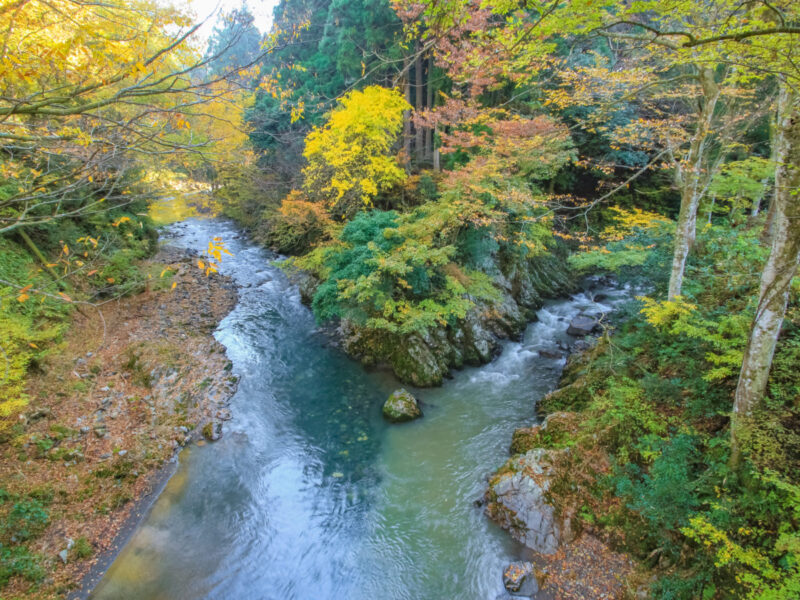
The headwaters of this river is in Ikeda City, and it is best known for its amazing greenery, which can be captured from a bridge called Kazura Bridge.
Read more about Sakura along Asuwa River
Asuwa River
3. Visit one of the most beautiful castles in Japan, Maruoka Castle
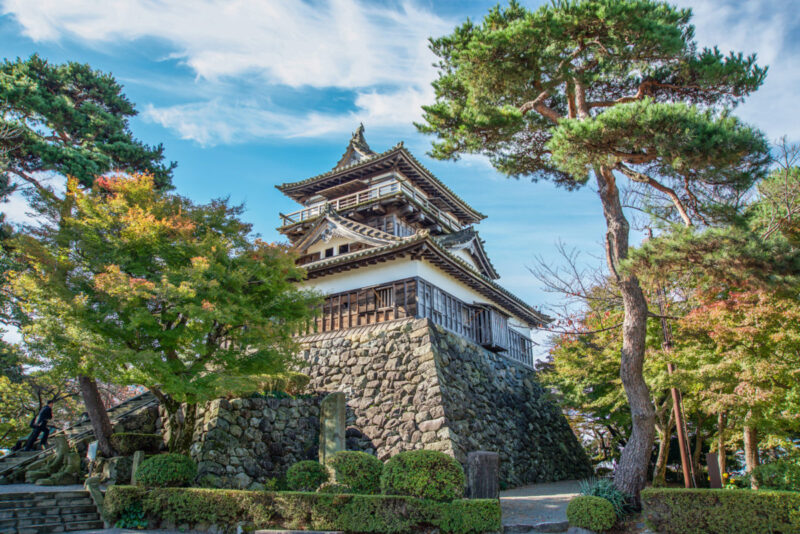
Maruoka Castle is relatively small compared to other castles in Japan, but it is one of Japan’s few remaining original castles. The castle was built in 1576 by Katsutoyo Shibata, and it is the oldest keep (donjon, main tower) in Japan, and is considered as one of the important cultural properties by the government.
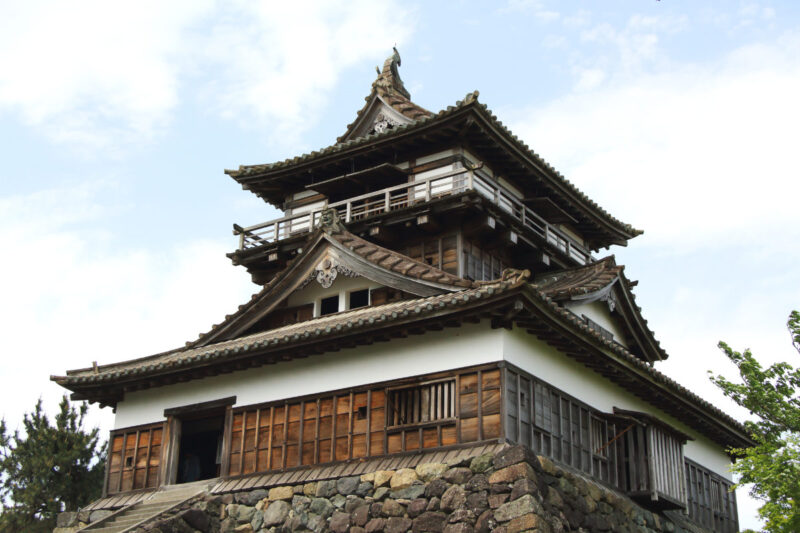
Only the original main tower and walls remain today, and the surrounding ground turned into a public park with many cherry blossoms trees, and this is the reason why people visit the castle every year in spring.
You can enter the main tower and inspect the interior design of the castle and get information and see artifacts of the castle from the nearby museum.
Maruoka Castle
-
- Business hours: 8:30 – 17:00
- Admissions: 450 yen (adults), 150 yen (children)
- Open throughout the year
- Google MAP
- Website (in Japanese)
4. Explore Sotomo with a cruise boat
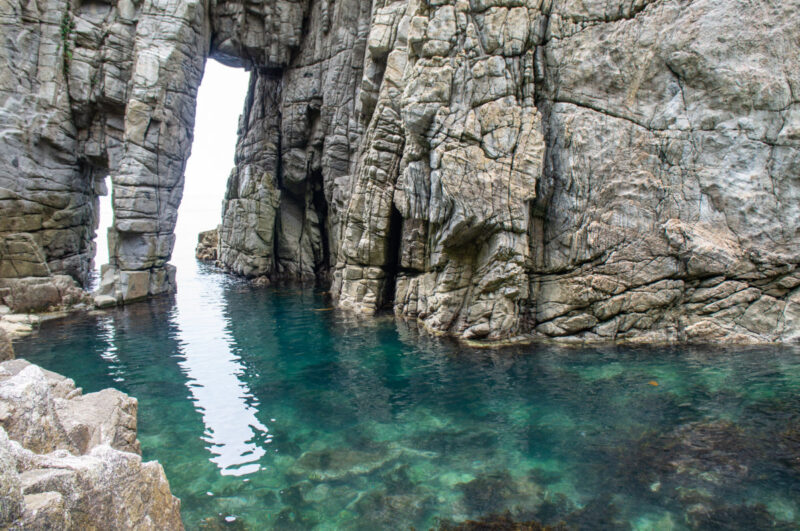
Make sure to sign up for the cabin cruiser tour around Sotomo when you are in Fukui!
Sotomo is the openings at the bottom of a cliff that was created by sea erosion, and it’s located at the tip of Uchitomi Peninsula. There are two openings in Sotomo, which are Daimon, the bigger opening, and Shoumon, the smaller opening.
The cabin cruiser tour offers you a 50-minute cruise experience around the Sotomo area, so you can appreciate these amazing nature’s wonders.
Sotomo
-
- Google MAP
- Book a cabin cruiser tour here
5. Stroll around Yokokan Garden

How about visiting Yokokan Garden for a little break during your trip?
Yokokan Garden is a circuit-style Japanese Garden in Fukui Prefecture, which was used as the second residence of the Matsudairas, the domain lord of Fukui in the Edo period.
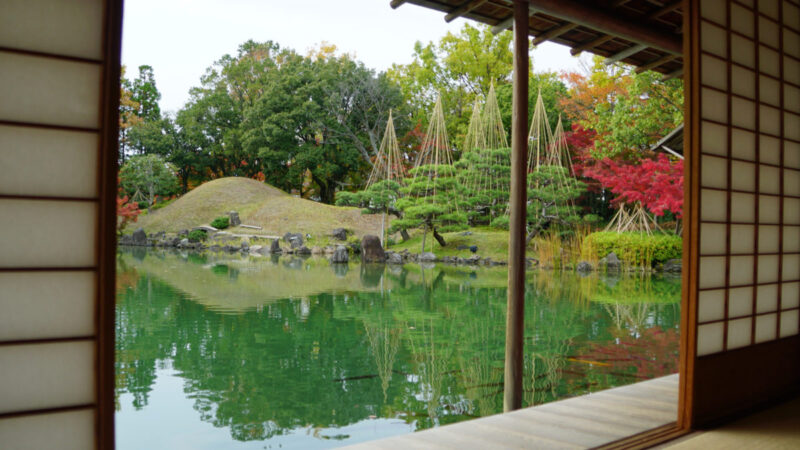
The garden and the Fukui Matsudaira Villa were destroyed by air raids during World War II, but they were restored in 1982 and now regularly operated as one of the most beautiful gardens in Japan.
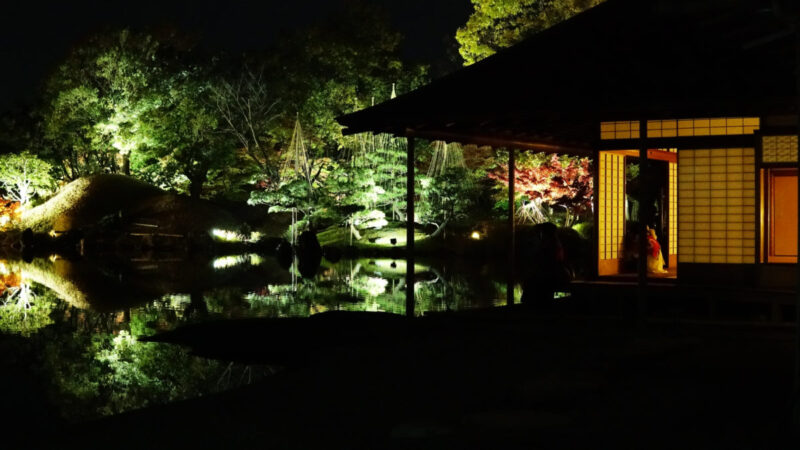
The garden features a large pond that looks breathtakingly beautiful in fall, especially during the light up at night.
Yokokan Garden
-
- Business hours: 9:00 – 19:00 (March 1 to November 5), 9:00 – 17:00 (November 6 to end of February)
- Admissions: 220 yen (age 12 and above)
- Access : a 15-minute walk from JR train Fukui Station
- Google MAP
- Website
6. See the beautiful dusk at Tojinbo
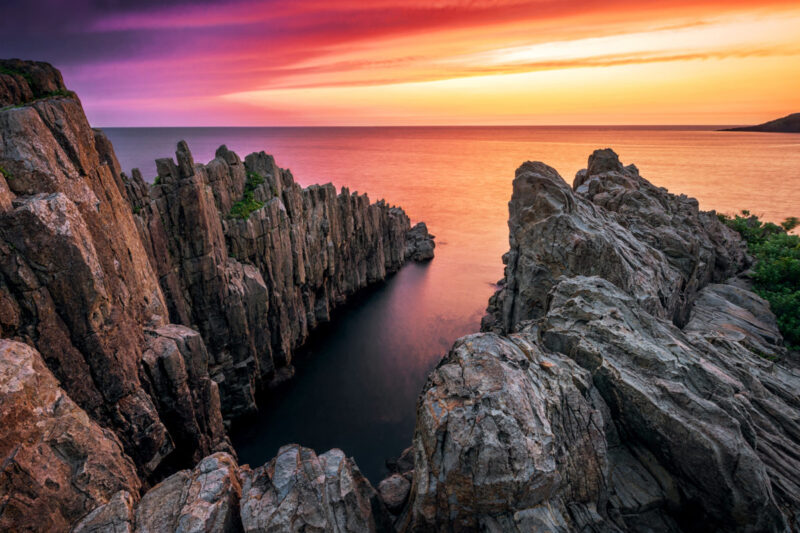
Tojinbo is a one-kilometer rugged basalt cliff in the town of Mikuni, and it is also designated as a National Treasure Site by the government of Japan. The coarse structure of the pillar-shaped rocks can only be seen in only three spots across the world.
You can visit Tojinbo anytime, but the best time to visit these cliffs is during dusk when the landscape is at its most beautiful.
Tojinbo
7. See the dinosaurs at Fukui Prefectural Dinosaur Museum
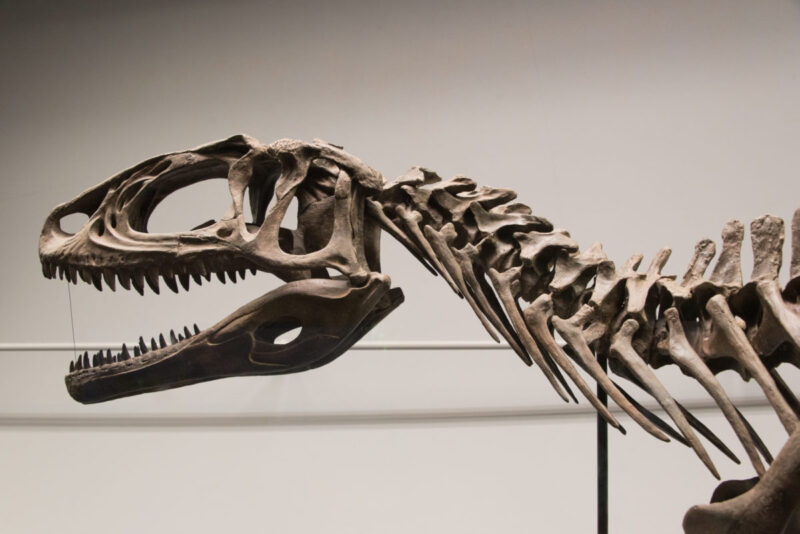
Fukui Prefecture is known as the “Land of Dinosaurs”, and it is the only prefecture in Japan that has a museum dedicated to dinosaurs. Fukui Prefectural Dinosaur Museum is in Katsuyama City, which is about an hour train ride from Fukui.
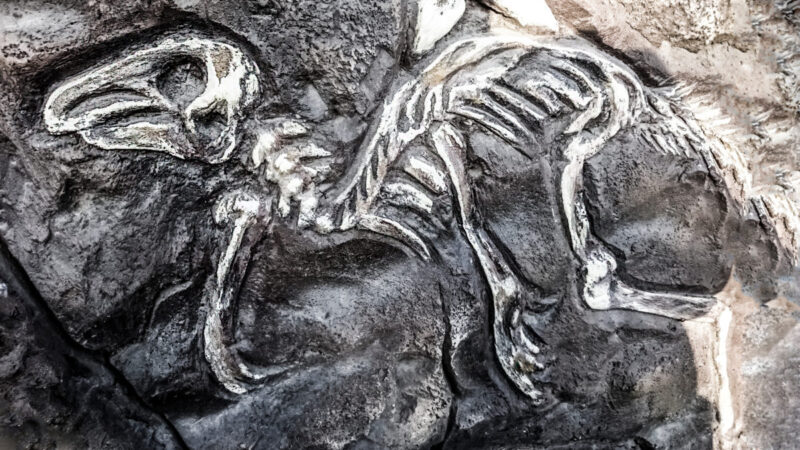
The museum looks like a dinosaur egg and is spread over four-floors, exhibiting fossils found exclusively in the prefecture, dinosaurs’ skeletons, and wonderful displays of earth sciences. Unlike other Japanese museums, the Fukui Prefectural Dinosaur Museum is quite foreigner-friendly as it offers enough English information to its visitors. Equally fun and informative for adults and children, how about stopping by this museum for an extra-ordinary experience?
Fukui Prefectural Dinosaur Museum
-
- Business hours: 9:00 – 17:00, 8:30 – 18:00 (during summer holidays)
- Closed on 2nd and 4th Wednesday, and from December 31 to January 1
- Admissions : 730 yen (adults), 420 yen (high school and college students), 260 yen (elementary and junior high school students)
- Google MAP
- Website
8. See the beautiful Japanese Azaleas at Nishiyama Park
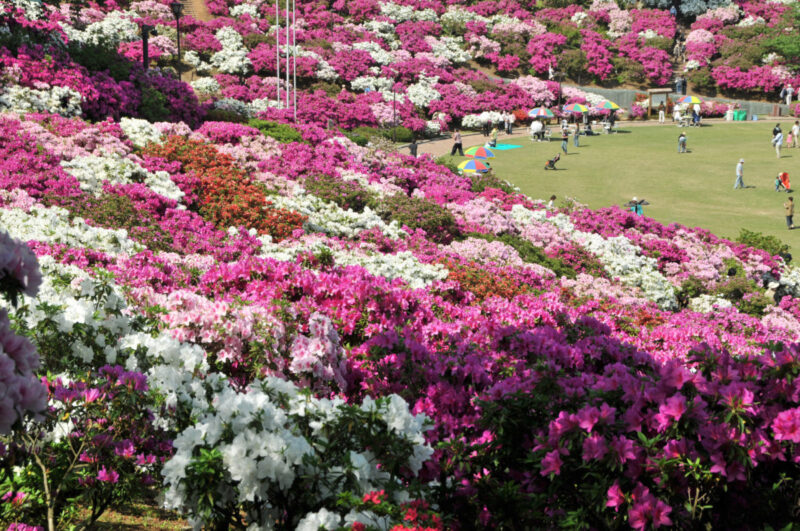
Nishiyama Park is a park in Sabae City, Fukui, that was certified as one of Japan’s Top 100 Historical Parks by the government. There are approximately 50,000 azaleas bloom in spring, and 1,000 cherry blossoms trees in April, and thousands of autumn leaves in fall.
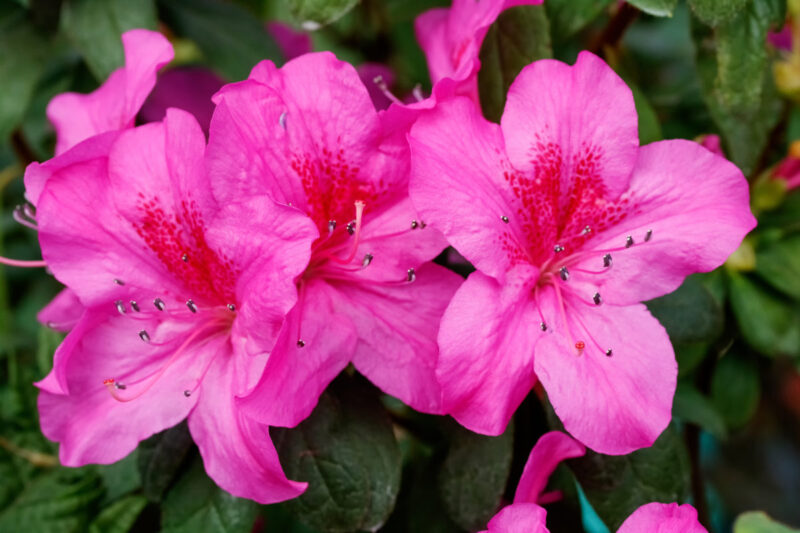
Azaleas are native to Japan, and there are around 40 original varieties of it blooming across Japan. Nishiyama Park is known as a park with the largest amount of azaleas in the Sea of Japan side.
Nishiyama Park
-
- Business hours : 9:00 – 16:30
- Closed on Mondays
- Admissions: free
- Access : a 3-minute walk from Nishiyama Koen Station
- Google MAP
9. Stop by the historical Ichijodani Asakura Clan Ruins
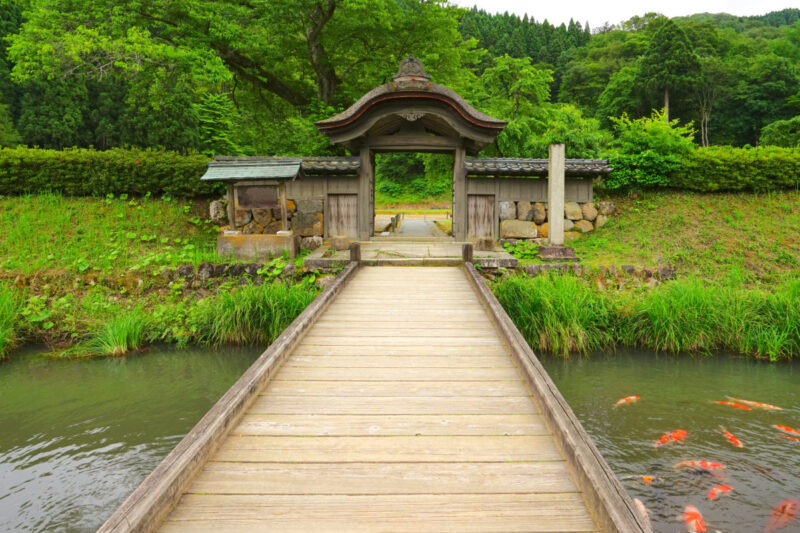
The Ichijodani Asakura Clan Ruins are the ruins of Asakura Clan’s castle town, a family that ruled Fukui for 103 years. Oda Nobunaga burned the town to the ground after he defeated the clan, but some buildings and gardens have been restored ever since then.
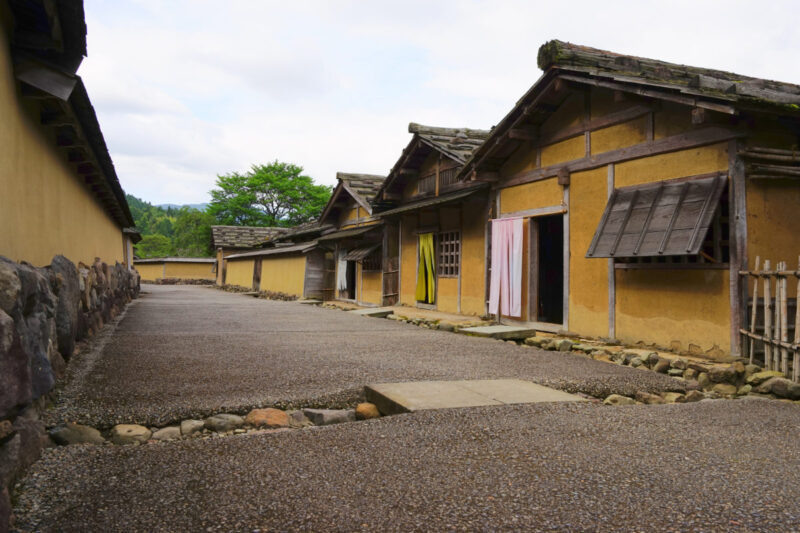
Stroll around the restored samurai residences and merchant homes, as well as the hilltop ruins of Ichijodani Castle, where you can capture a beautiful view of Fukui while experiencing the history of the area.
Ichijonadi Asakura Clan Ruins
-
- Business hours : 9:00 – 17:00
- Admissions : 100 yens (age 18 and above)
- Google MAP
10. Enjoy the gorgeous scenery of Echizen Ono Castle
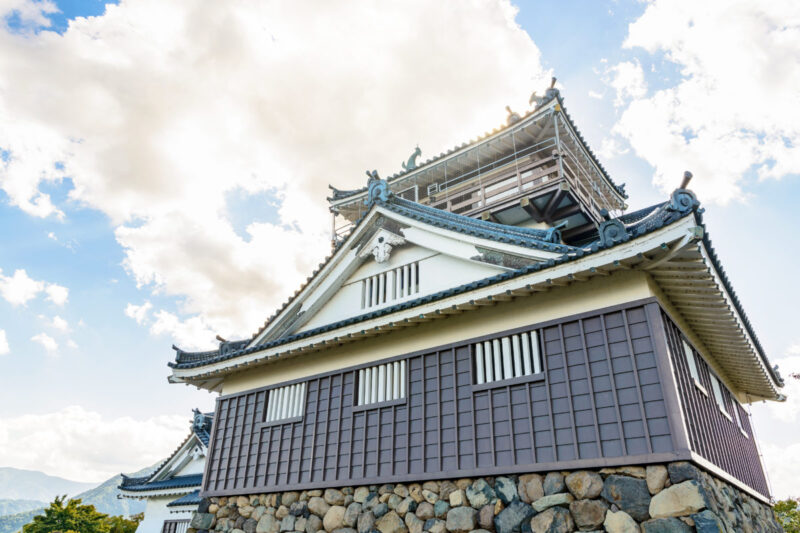
Echizen Ono Castle is a small castle in Ono, Fukui, and it sits at around 250 meters above the sea on a hill. Sometimes, when the weather is right, clouds and mist sit below the castle, making it look like a ‘Castle in the Sky’.
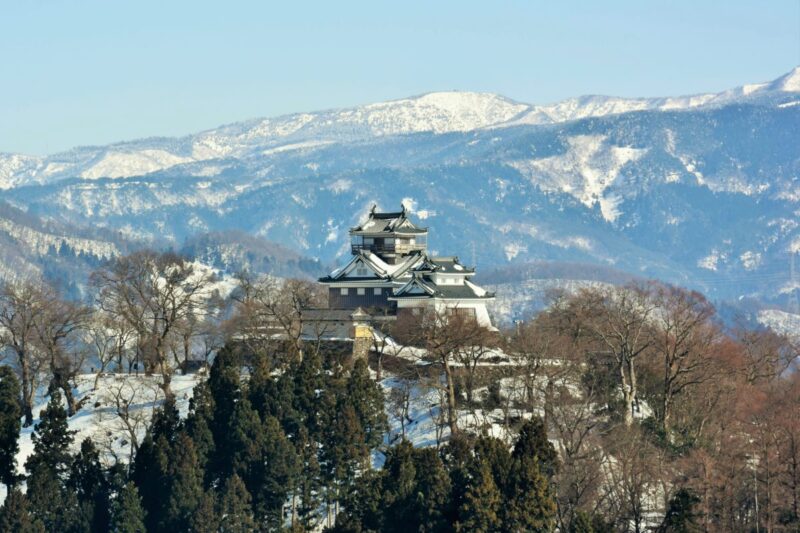
The original castle was built in the 16th century by Nagachika Kanamori, who got two-thirds of the land of Ono-gun from Oda Nobunaga. The castle was once destroyed in the Meiji period but later was restored in 1968.
Echizen Ono Castle
-
- Business hours : 9:00 – 17:00 (April to September), 6:00 – 16:00 (October to November)
- Closed from 1 December to 31 March
- Admissions : 200 yen (age 15 and above)
- Google MAP
- Website
Fukui’s best local treats
Fukui Prefecture is known as a prefecture with the most fertile farmland and richest fisheries in Japan, including its amazing soba noodles and fresh snow crabs. From Echizen soba to the well-known Echizen crab, wherever you go, scrumptious local treats await in Fukui. Here are our picks for the best foods to try when visiting Fukui!
1. Echizen soba
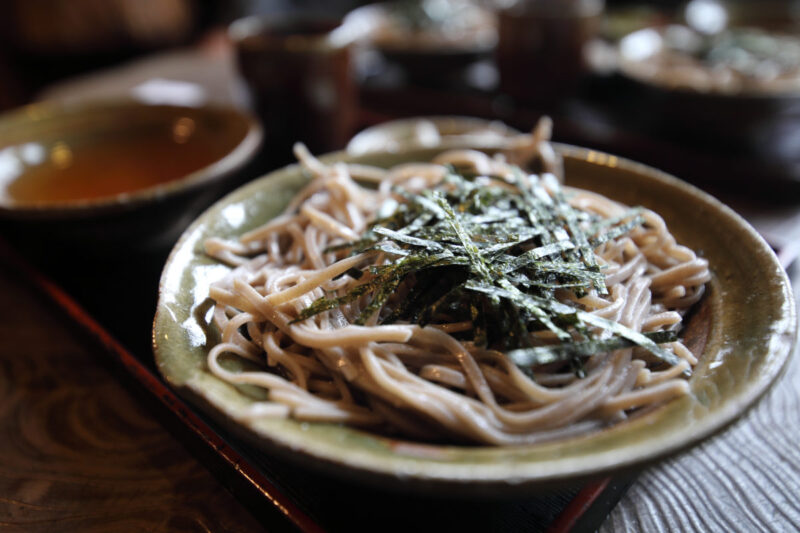
Every region in Japan has its own buckwheat noodles, and Fukui is best known for its amazing Echizen soba, which history is said to date back to 1473. What differs Echizen soba with other buckwheat noodles is its amazing ingredient and the technique used to make it – high-quality unpolished buckwheat and distinctive flour milling technique. In Fukui, Echizen soba is usually served cold with grated daikon radishes.
2. Volga rice

Volga rice is a local dish of Takefu district in Echizen City, which is basically omelet rice topped with deep-fried pork cutlet and special sauce on it. As of today, no one knows who invented Volga rice, but the food is quite popular in Echizen, and currently, there are 15 restaurants serving this rice in various styles.
3. Wakasaji donburi
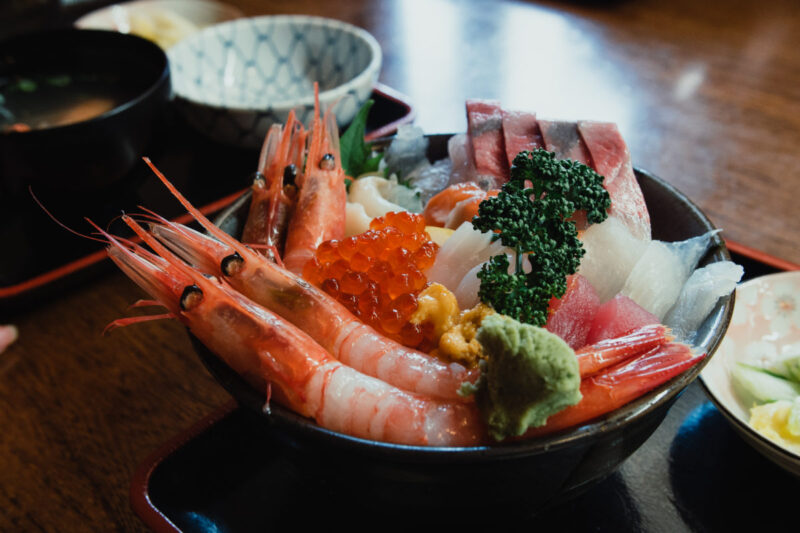
Wakasaji donburi was created in 2013 by a seafood restaurant in Wakasa area, and it is basically a seafood rice bowl that is made using fresh seafood taken from the nearby sea. More than 30 restaurants in Fukui serve this rice bowl, and some even serve it with their own unique arrangement.
4. Hamayaki saba

Hamayaki saba is basically a charcoal-grilled mackerel that originated in Obama City in Fukui. Mackerel is popular local produce of Wakasa Bay, and since mackerel spoils more quickly than other fish, the fishermen used to gut and grill them by the seashore to preserve them. Hamayaki saba, which are grilled as a whole and usually eaten together with gingery and soy sauce, became a popular souvenir among tourists visiting Fukui these days.
5. Echizen crab
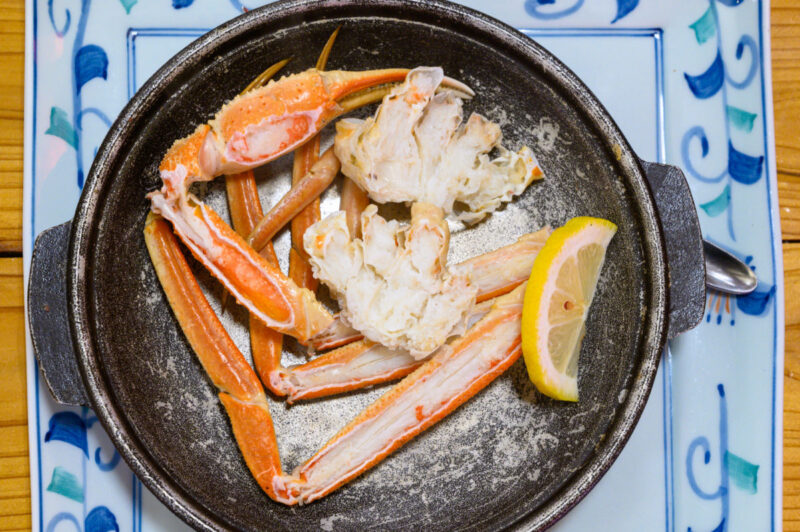
Finally, Fukui is best known for its snow crabs, Echizen crab, which is only available in the winter. Echizen crab is known for its amazing textures and rich flavors. The most common way to eat these crabs is by boiling them, but you can enjoy them raw as sashimi, grilled, or even as a shabu-shabu.
Now that you have an idea of how many fabulous spots are in Fukui, all you have to do is plan your itinerary to enjoy unforgettable experiences in Fukui!

